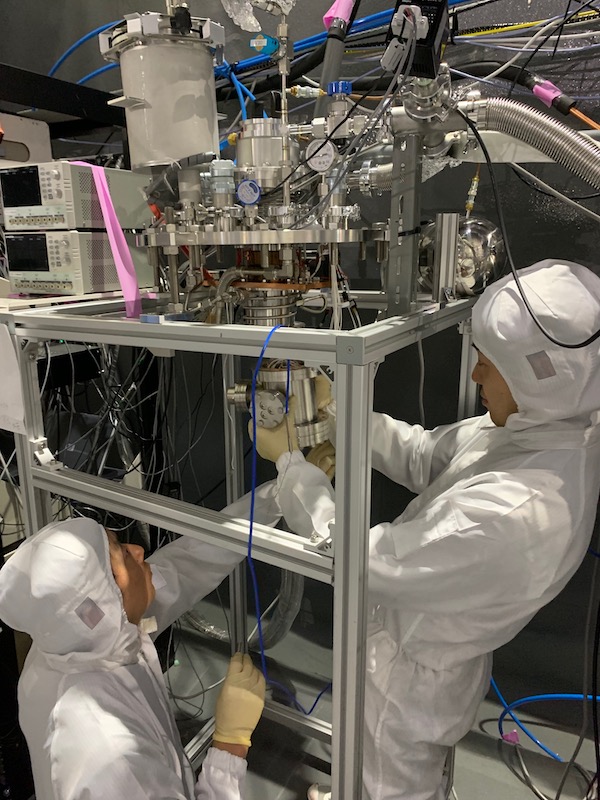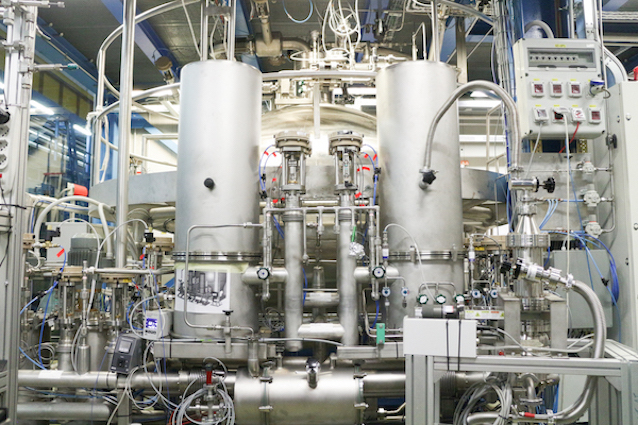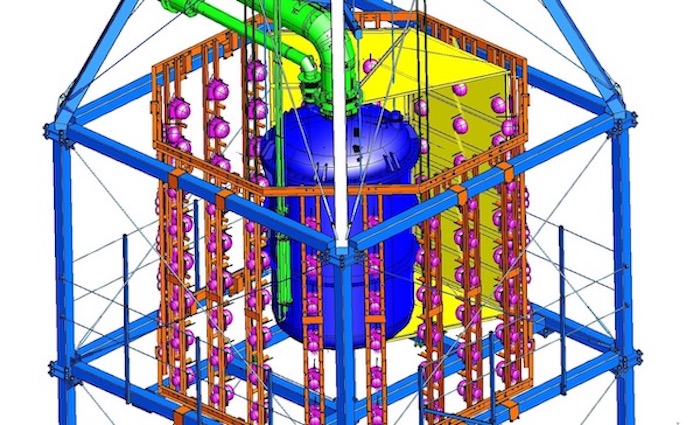Direct Dark-Matter Search
Involving Research Members



- Direct Dark-Matter Search
- Why We Use Liquid Xenon?
- XENON Experiments
- Detector Development for the Future
Direct Dark-Matter Search
Various observations based on gravitational interaction have revealed that there is unknown matter in our universe, which cannot be explained by the standard theory of particle physics, and which is about 5-6 times larger than normal matter. Such unknown matter is called dark matter because it does not interact with the electromagnetic field and cannot be seen by the eye. Dark matter is essential for the formation of large-scale structures in the universe, such as galaxies and stars, and it is thought that there is about one particle of dark matter per liter in our surroundings. If dark matter is a weakly interacting subatomic particle, it is possible to reveal the true nature of dark matter by capturing its reactions with atomic nuclei, and many searches are being conducted around the world. The discovery of dark matter and understanding of its true nature will not only be a major catalyst for the opening of new physics beyond the standard theory, but is also believed to hold the key to the understanding of the birth of the universe and its thermal history. Thus, direct observation of dark matter is one of the most important issues in both particle physics and astrophysics, and our research group is participating in the XENONnT experiment using liquid xenon to directly search for dark matter.
Why We Use Liquid Xenon?
The direct search for dark matter is an experiment to measure the energy (dissipated in the form of heat generation, luminescence, ionization, etc.) of nuclei recoiled by dark matter, and to distinguish it from background events (BG) caused by sources other than dark matter. Different experiments use different types of atoms to detect different signals. In our group, we are focusing on liquid xenon. This is because liquid xenon detectors have the following characteristics.
-
High Light Intensity
The energy given to the detector by elastic scattering is very small, on the keV scale. Therefore, a scintillator with high luminescence is required to measure the event. Liquid xenon has the same luminescence as NaI, a typical inorganic scintillator. -
Easily Enlarged
The XMASS and XENONnT experiments use ton-scale liquid xenon, and the use of high-mass targets enables the search for dark matter with smaller interactions with nucleons. -
Low Background Events
The availability of liquid, gaseous, and solid phases makes it possible to reduce the amount of internal radioactive materials contained in xenon, such as uranium and thorium. -
High Self-Shielding Capability
Xenon has a short radiation length of about 2.8 cm, and gamma rays from the detector and outside the detector rapidly decay once they enter the liquid xenon, effectively reducing background events.
XENON Experiments
Our research group is participating in the XENON experiments which is carried out at the Gran Sasso National Laboratory (LNGS) underground experimental facility in Italy. For more information about the experiment, please visit our official page(XENON page) and various social media.
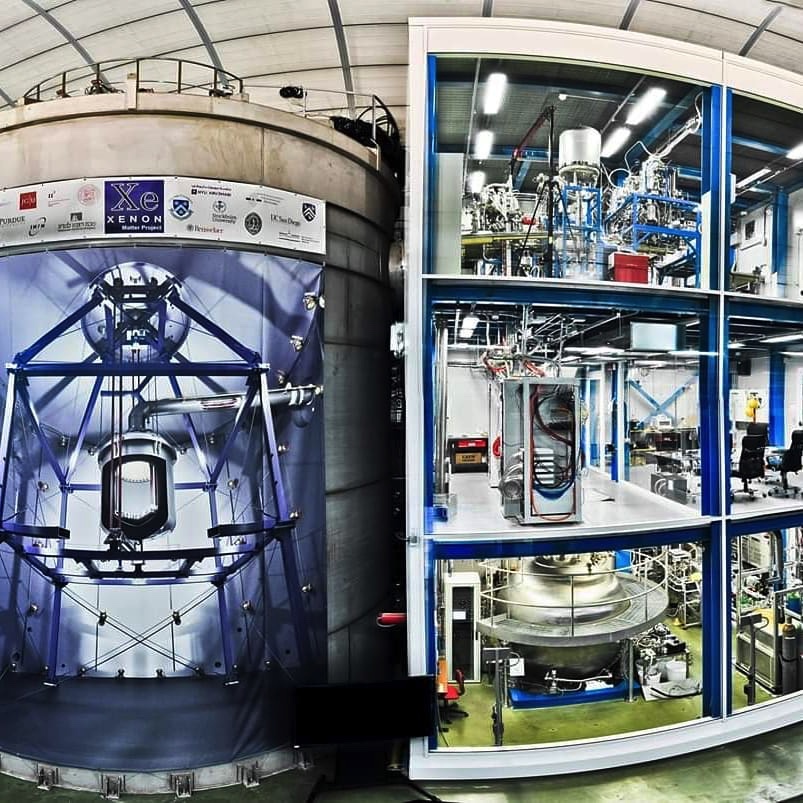
Detection Principle of Dark Matter
XENON is an experiment to directly search for dark matter using liquid xenon as a medium. In rare cases, dark matter collides with xenon nuclei, producing tiny light and ionized electrons. By detecting these signals, it is possible to obtain evidence of dark matter, and the XENON experimental group has conducted various experiments as shown in Figure 1.
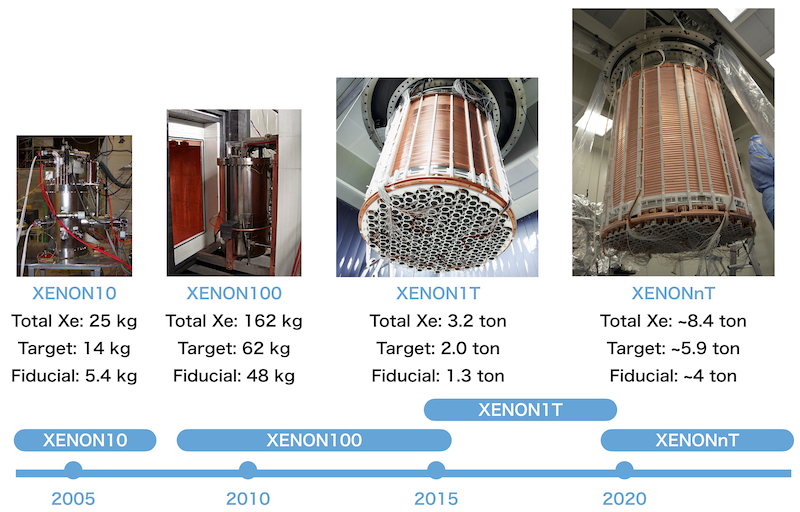
As shown in Figure 2, the tiny light (S1) produced in the detector is detected by photomultiplier tubes (PMTs) laying on the top/bottom of the detector. The ionized electrons drift upward through the liquid due to the electric field applied in the detector, and are extracted into the xenon gas due to the strong electric field applied at the liquid/gas interface. The difference in the detection time between the S1 and S2 signals corresponds to the drift time of the ionized electrons, which corresponds to the z-position of the collision point. Since the xy position information of the collision point can be reconstructed from the hit pattern of the S2 signal at the upper PMT, the three-dimensional position of the reaction point can be reconstructed in the XENON experiment.
Furthermore, since the signal ratios of S1 and S2 (S2/S1) described above are different between the electron recoil caused by beta decay of radioactive radon, which is the main background event, and the nuclear recoil caused by dark matter, it is possible to selectively eliminate the background event.
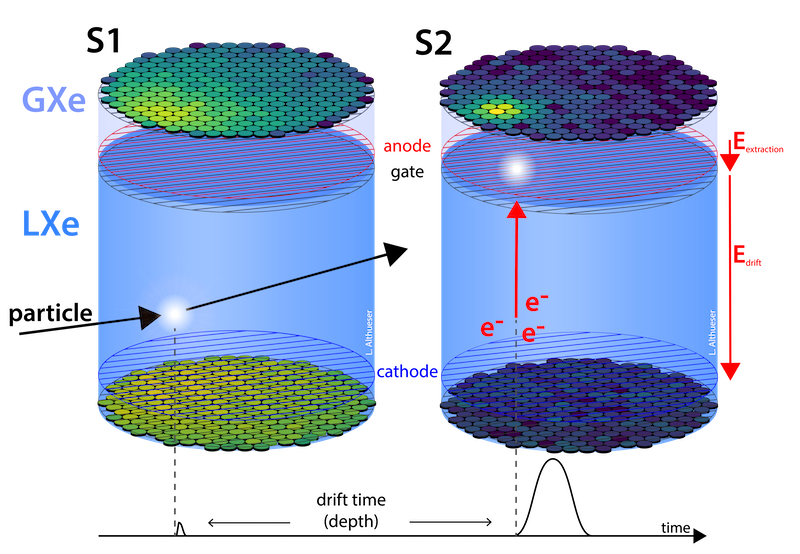
Results of the XENON1T Experiments
The XENON1T experiment completed its operation in 2018 and achieved the world’s most sensitive direct dark matter search (Figure 3). Our research group made significant contributions, especially in the calibration (calibration) of the liquid xenon detector using a radiation source, the operation and performance evaluation of the photomultiplier tubes, and the analysis of the acquired data. In addition to developing a variety of dark matter searches (WIMPs, Axion, dark photons, etc.), we have also conducted analyses on neutrino-free double beta decay and solar/supernova neutrinos.
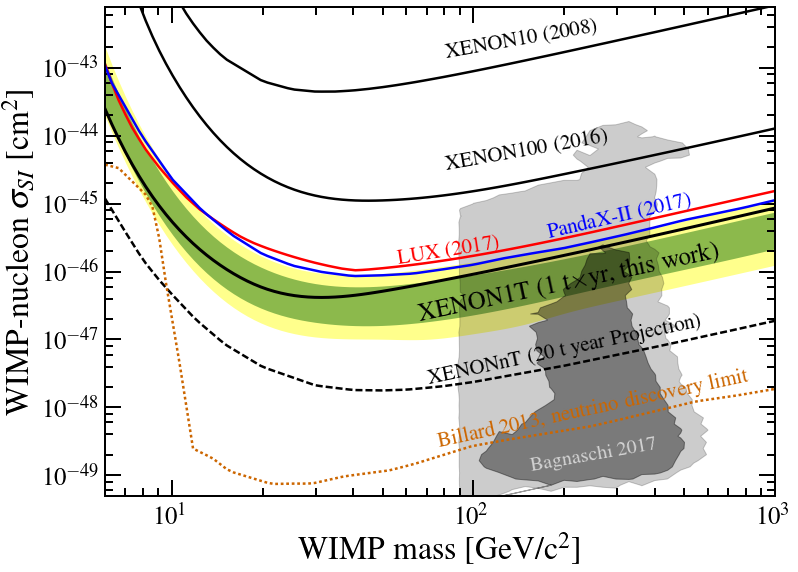
XENONnT Experiments
The XENONnT experiment is the world’s largest dark matter detector using about 8.4 tons of liquid xenon, and its construction is currently underway at the Gran Sasso National Laboratory (LNGS) in Italy. The XENONnT experiment is an international collaborative project involving about 170 researchers from 11 countries around the world, and is scheduled to begin in the fall of 2020. The Nagoya University research team is contributing to the liquid xenon purification (Picture 2), which increases the sensitivity of the detector, and the neutron-elimination detector (Picture 3), which is key to the final confirmation of the evidence of dark matter, using the gadolinium-doped water Cherenkov detector technology developed in the Super-Kamiokande.
Detector Development for the Future
One of the problems in the future search for dark matter will be the background events caused by neutrons and radioactive radon. To solve this problem, we are developing a new photodetector and a liquid xenon detector with a new mechanism.
Development of Photodetector
Currently, photomultiplier tubes are used as photodetectors in XENON experiments. Since photomultiplier tubes have a complicated structure and a large amount of material, there is a limit to the amount of radiation they can contain. We are now conducting R&D on a new type of photodetector called a Silicon Photomultiplier (SiPM), which is expected to replace PMTs due to its simple structure and low radiation content. However, SiPMs have a large contribution of false signals (dark counts) due to thermal noise, which makes them unsuitable for low energy experiments such as dark matter searches. We are working with Hamamatsu Photonics, the developer of the SiPM, to overcome this problem (Pic. 4).
Development of a New Liquid Xenon Detector Using Quartz Glass
The largest background event in the current XENON experiment is caused by radioactive radon adhering to the surface of the detector, such as the Teflon used to reflect the light and the container that holds the liquid xenon. In order to eliminate this, we proposed the idea of enclosing the center of the detector with quartz glass, since radioactive radon is constantly bubbling up from the detector components. We are developing a sealed liquid xenon detector using this quartz glass and conducting R&D to eliminate radioactive radon using this detector.
